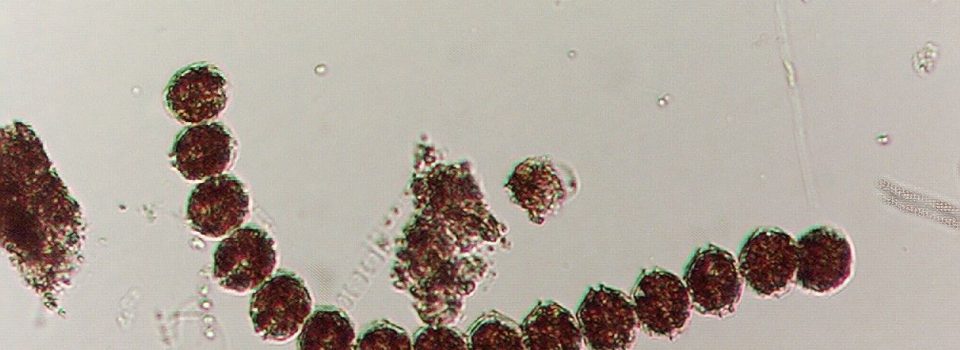IFOP delivers results of Project “Management and Monitoring of Red Tides in Los Lagos, Aysen and Magallanes regions
May 19th, 2016Harmful Algal Blooms (HABs), commonly known as red tides, are natural events that occur in the aquatic environment by an increase in the population of certain microalgae and can produce harmful disorders in human being and ecosystems. These effects may result from the consumption of shellfish that are fed with these microalgae, some of these produce poisons for humans or other aquatic organisms.
On April, Wednesday 27, at Puerto Montt city, IFOP informed with massive coverage about the results of the project “Management and Monitoring of the Red Tides in Los Lagos, Aysen and Magallanes regions,” IX stage 2015-16.” The activity was developed by the researchers who are in charge of this study, and it has work teams at Puerto Aysén and Punta Arenas. Through six different presentations, the main results of the program, which commenced in 2006, were presented.
Dr. Leonardo Guzmán Méndez, IFOP Aquaculture Division Head, presented “Introduction to management and monitoring program of noxious algae bloom in fjords and South Austral channels,” where he explained in detail the progressive evolution in coverage of harmful microalgae Alexandrium catenella, associated with Paralyzing Shellfish Poison (VPM), from the first records in 1972 in the region of Magallanes to the current bloom situation associated with the oceanic coast of Region de los Lagos during April 2016.
Then, the researcher Dr. Oscar Espinoza González presented the “Main results of the Regular subprogram in the regions of Los Lagos, Aysen and Magallanes, period May 2006 – February 2015.” During this presentation, the importance of environmental variability was highlighted as moderator of distribution and abundance of harmful microalgae in the three regions being studied.
Later, the researcher Dr. Gemita Pizarro Nova commented about “Distribution and abundance of noxious and toxins associated during the period between March 2015 and February 2016.” The professional explained in detail the temporary and spatial evolution of paralyzing and diarrheic toxins (VPM, VDM) from the year 2015 up to now, mentioning as important the increment of toxin levels during the summer months of 2016.
The researcher, Rodrigo Martínez González also commented about the first results of “Distribution and abundance of noxious microalgae and toxins associated during the period between March 2015 and February 2016.” During his presentation, he mentioned as a very important thing the frequency of sampling (every 10 days), as a way of understanding the distribution of red tide in a transition sector of bloom events, such as north of Aysen, Raul Marin Balmaceda and the south of Chile.
Among the main goals presented by the researcher, Ms. Pamela Carbonell Arias during his exposition about the “Preliminary results of new work lines and the potential benefits for the program of management and monitoring of red tides,” we can mention the importance of incorporating the culture of noxious species to the red tide program, as a way to estimate the eco physiological rates of species present in each one of the regions.
Finally, Dr. Oscar Espinoza González commented about the importance of incorporating new tools which can improve the better understanding of the red tides through the presentation “Distribution examples and abundance of Alexandrium catenella at some sectors of Aysen region.”
After the presentations were finished, a round of questions and discussion was developed. From these, the most important were the exhibition of possible hypotheses about the current event of red tide affecting the ocean coast of Region de los Lagos, oceanographic processes that can be implicit and how benign environmental conditions during last summer could be an important factor in these events.
Working groups on HAB and marine toxins of IFOP, distributed in the three far southern regions of the country, provide key decision-making information for the Authority and has been particularly relevant in the work that has faced during the recent weeks associated with Alexandrium bloom catenella affecting the region of Los Lagos. This program is addressed jointly with the Secretarias Regionales de Salud de la Region de los Lagos, Aysen y Magallanes, whose laboratories are responsible for toxicological analysis of seafood that are collected from the estuary of Reloncaví to the Beagle Channel.
